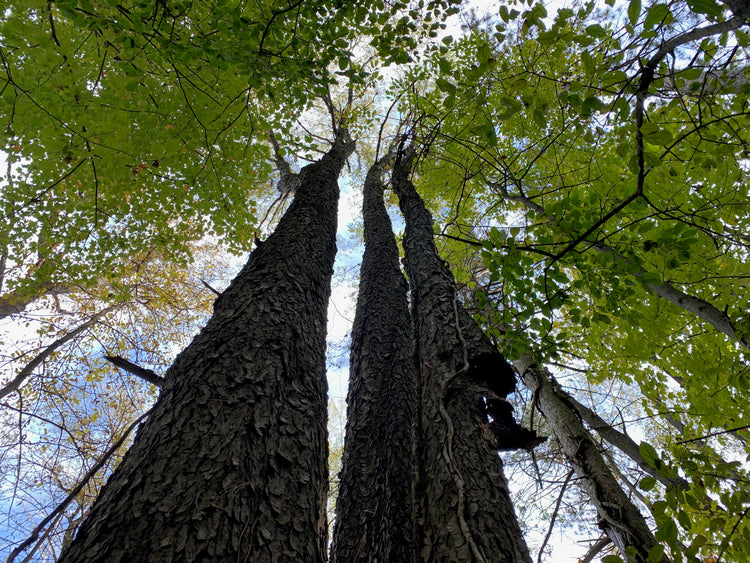This question in my heart "Humans can speak to forests. And forests can speak back...What does it mean to speak? What does it mean to listen?”
Eduardo Kohn
How can we listen to the land, try and hear its voice, who it really is and let it share with us something of its history? This might give us a clue as to how to help it grow into its own future in a way which marries the best of human intentions for sustainable ecological action, with what the land itself is trying to become?
Margaret Colquhoun, Reading Nature as a Text
The determination to know a particular place, in my experience, is consistently rewarded. And every natural place, to my mind, is open to being known. And somewhere in this process a person begins to sense that they themselves are becoming known, so that when they are absent from that place they know that place misses them. And this reciprocity, to know and be known, reinforces a sense that one is necessary in the world.
Barry Lopez
Who can guess the luna’s sadness who lives so briefly? Who can guess the impatience of stone longing to be ground down, to be part again of something livelier? Who can imagine in what heaviness the rivers remember their original clarity? Strange questions, yet I have spent worthwhile time with them. And I suggest them to you also, that your spirit grow in curiosity, that your life be richer than it is, that you bow to the earth as you feel how it actually is, that we – so clever, and ambitious, and selfish, and unrestrained – are only one design of the moving, the vivacious many.
Mary Oliver, The Moth, The Mountains, The Rivers

How do we learn to listen to the land, shifting from human-centred to earth-centred ways of thinking, feeling, and being in the world? What are some relational practices that connect us with the kinship that surrounds us, helping us see ourselves within a web of relations? How might we open our senses, beginning to learn the language of trees, birds, and insects?
We've compiled a list of possibilities for entering into conversation with the natural world.
When you meet an other-than-human being, get to know them: "What is this being telling me? What are ways I can listen? Who are you? Why are you here? What have you brought us? Let’s get to know you and what you are bringing. What do you need? What are your relationships? Who is your family? How do you fit in?" Who do you dream of becoming. Robin Wall Kimmerer
Coming to know the interconnectedness of place: Ask "Where is here? Who am I that I am here? Who else is here alongside me? What gives and sustains life here? How can I participate in the life that is here? How can we live well together here?" Dwayne Donald
Begin a relational walking practice: “Consider it a form of prayer, this walking that you’re doing, this connecting with the kinship that surrounds you."
Dwayne Donald.
“Shifting our thinking in this way allows for a decolonial moment. For us to rethink our relationship with land. Land as teacher. And non-human others as teachers.” Shauneen Pete
Open your senses: "Go find a tree-your tree. Imagine linking into her network, connecting to other trees nearby. Open your senses." Suzanne Simard
The aromas of trees: five practices: "Every tree offers us a wordless sensory experience, a connection that unites human bodies and consciousness to plants’ inner worlds. This encounter is reward enough. The particular aroma of a tree also contains stories, past and present. Our human aesthetic experience is a doorway to the trees’ inner worlds." David G. Haskell
How does this place feel: Go to a place, a place you're familiar with. A spot in your yard. By a little forest. Near a stream. Sit down and relax. Get comfortable. Then explore the feeling of place through a series Stephen Harrod Buhner, Exercises for refining the heart as an organ of perception
Observing with twelves senses: "It only takes on observation to open the door to a new world whose richness is revealed by the interaction between interest and conceptualisation, an interaction that is powered by new observations." Tom van Gelder
Rooted in the World: "How can we become more open and remain open to the richness of the world? Can we learn from the plant a way of being?" Craig Holdrege

The Forming Tree: "Directing our gaze toward the form of trees leads us beyond the tree itself. It leads us to a web of relations of which the tree is part. Once you begin to see in such an organic form the tracks of its history and its relations to its surroundings, every meeting with a new tree is a source of excitement, a riddle waiting to be appreciated and deciphered." Craig Holdrege.
Being with the World: "Imagine taking five minutes every day to go outside, in whatever environment you’re in. You go with the intention of inviting the world in. Four different ways —events, process and transformation, gesture, agency (nature naturing)—of connecting with the world qualitatively: event, transformation, gesture, agency." Craig Holdrege

Learning to see the drama in every plant: "What better way is there to learn a living approach to nature than learning from the master of life on earth, namely, the plant world? We can carefully observe how a specific plant develops — unfolds, transforms, and ages. We sketch the plant and recreate precisely in our imagination its development. In this way we take the plant as a living process into our own minds and mold our thoughts around it." Craig Holdrege
Meeting bloodroot: "Many habits of thought can get in the way of our seeing the drama of a plant’s life... To see the drama, I need to literally come to my senses and immerse myself in the variety of phenomena." Craig Holdrege
Five practices for listening to the language of birds: ““Kinship and community are no longer just ideas, but are lived, sensual relationships… Language-learning is indeed for everyone. It unites us. And so we return to the invitation offered to us by the birds around our homes. In their voices we hear the many rhythms of the seasons and the varied physicality of habitats. We learn the individual stories of each bird. We understand how our community is changing and what we should remember from this present moment. We hear and create Earth’s universal grammar... We’ve been invited by the birds, the trees, the forests, the more-than-human world… Let’s answer the birds’ invitation, stepping outside to give them the simple gift of our attention. Listen. Wonder. Belong.” David Haskell
Listening to trees: “The practice of noticing, knowing, and naming those species can lead to deeper relationships with them… There’s always some kind of transition happening, and when we pay attention to these changes we can bring that story into our lives through our senses, and therefore, of course, into our minds and bodies.” David Haskell.
Animate Earth: science, intuition and Gaia: “To touch the coarse skin of an oak tree with one’s fingers is also, at the same moment, to experience one’s own tactility, to feel oneself touched by the tree. Similarly, to gaze out at a forested hillside is also to feel one’s own visibility, and to feel oneself exposed to that hillside — to feel oneself seen by those trees… Whenever we experience ourselves not as disembodied minds, but as the very palpable, sensitive, and sentient organisms that we are, we cannot help by notice this curious reciprocity in our sensory experience: to perceive the world is to feel the world perceiving us.” Great set of contemplative activities for exploring perception: active looking, finding your Gaia place, sensing the round earth, swimming through the atmosphere, visualising Daisyworld, breathing chalk & granite, riding the clouds and more. Stephan Harding
New eyes for plants: a workbook for drawing and observing plants: “If you’re trying to understand how something came about or get closer to something in Nature, then you might start with the first impression of it… and then slowly, as you look at it, you come down through its life context… until you start to be aware of a life process within the physical.” Margaret Colquhoun

